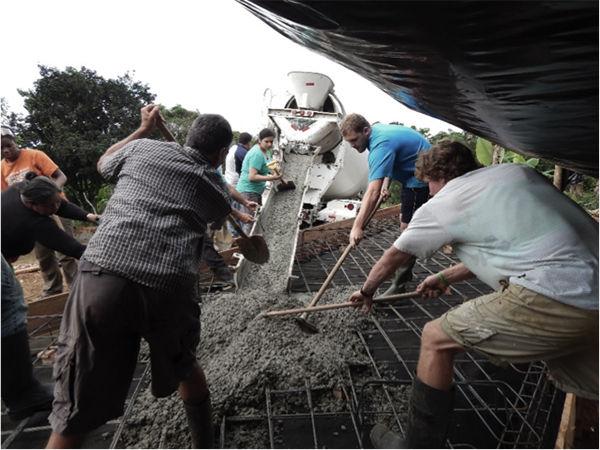Since its creation 12 years ago, Engineers Without Borders has made a difference in the lives of people around the world — and has no plans of stopping anytime soon.
EWB’s A&M chapter seeks to empower international communities through engineering solutions designed and delivered on-site by students. Student members have built and installed water infrastructure in South America, and they plan to continue building on their work there.
Shawn Dalglish, civil engineering graduate student and EWB president, said the organization helps provide access to people’s most basic needs.
“We help to provide innovative solutions to developing communities abroad,” Dalglish said. “We try to empower those communities to improve upon their current state and improve upon their current quality of life.”
The organization does this through international development projects, with the A&M chapter currently working on water projects in Costa Rica and Nicaragua.
“For Costa Rica its more of a distribution system, they have plenty of fresh water, they just have difficulty getting it to all the houses that need it,” said Ryan Skinner, industrial engineering junior and EWB vice president of projects. “In Nicaragua we’re actually looking at source-point creation, so actually drilling wells and finding the water out of the ground.”
Skinner said the Nicaraguan project has posed challenges in water quality that Costa Rica did not.
Skinner said the Texas A&M team visited Nicaragua to make an assessment of the area and test the water quality.
“There’s a lot of arsenic and E. coli and stuff like that in their water supply, so we’re working on solutions to filter and get stuff like that out,” Skinner said.
Skinner said EWB was in its third project cycle in Costa Rica. The first two project cycles installed two water transportation projects and built a computer center in the community.
Clara Pappenfort, chemical engineering junior and EWB publicity director, said EWB partners with the community in order to find out what it needs before they try to engineer solutions.
“Our mission is really to partner with the community [and] find out their basic needs that they’re not meeting,” Pappenfort said. “Then finding ways that we can engineer those designs and build them with the community’s help so that they can have their own sustainable design.”
Skinner said the projects have a dual purpose — improving the quality of life of others through engineering, and developing a lasting relationship with the community they serve.
“You come in and you build a relationship with these communities,” Skinner said. “There’s a lot of things going on beneath the surface other than just, ‘Does your engineering design work?’”
Skinner said EWB focuses on a well-rounded design. Their projects need to be affordable and easy to maintain in order to best serve the communities they are placed in, but these design parameters can be challenging to meet.
Pappenfort said the important thing is teaching the communities how things work and how they’re put together.
“The main goal is sustainable design, so we’re not just coming in, dropping something in for them, then leaving,” Pappenfort said. “We’re helping to give them a sustainable design that they can keep using and that they know how to provide regular maintenance on.”
Skinner said the guidance they receive along the way helps the projects and the organization be successful.
“Every step of the way there’s guidance — we have guidance from our mentors at A&M, we have guidance from headquarters, so if we kind of stray off the path we get pushed back pretty quickly,” Skinner said. “That’s the nice part is that we don’t make serious blunders.”
Dalglish said people often think of EWB as just a group of civil engineers working on infrastructure projects, but in reality it is a diverse group of people. Members come from many different engineering and non-engineering disciplines, and they share a desire to serve international communities with the skills they have to offer.
Dalglish said it is rewarding to be a part of a worldwide organization with such a broad impact.
“We’re doing our one project in Costa Rica or Nicaragua, but there are hundreds of other projects in other countries where people are doing the same thing so we’re not alone — there are so many people using what they’ve learned,” Dalglish said “I think that the more members that are involved the better, because we have so many good Aggie engineers on the A&M campus and I think that we have so much to bring to the table.”
Philanthropy meets innovation
November 11, 2014

Ebony Christian, Class of 2010, and Ryan Skinner, industrial engineering junior, work on a developmental project in Costa Rica.
0
Donate to The Battalion
Your donation will support the student journalists of Texas A&M University - College Station. Your contribution will allow us to purchase equipment and cover our annual website hosting costs.
More to Discover







